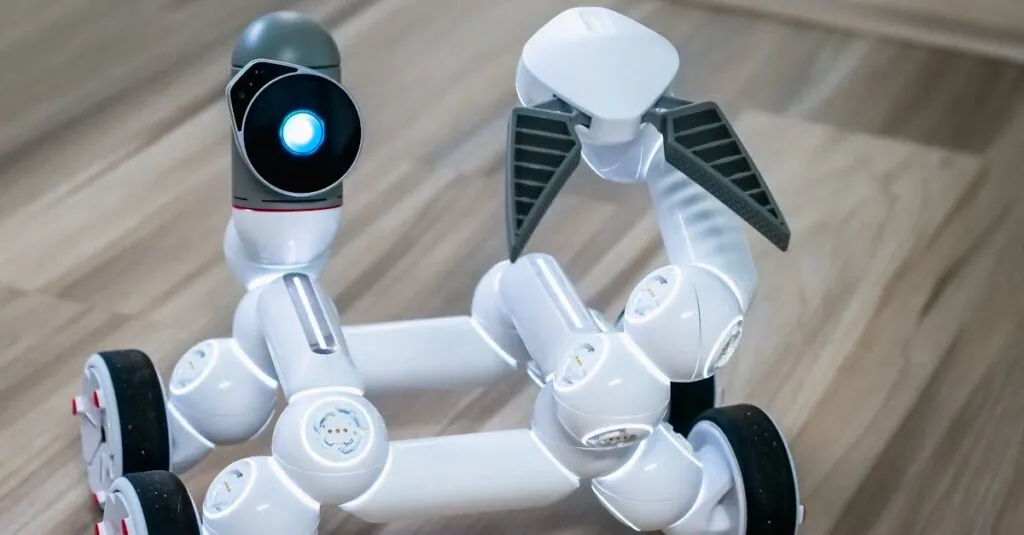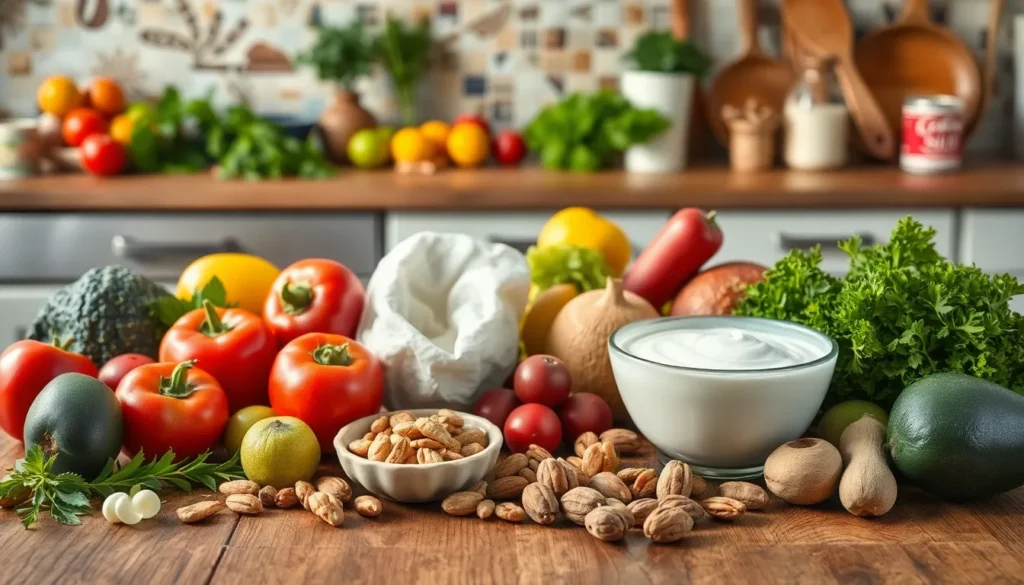Table of Contents
ToggleImagine a world where your pots and pans are smarter than your average smartphone. Enter smart cookware sensors, the culinary sidekicks every home chef didn’t know they needed. These nifty gadgets are revolutionizing the way people cook, making kitchen disasters a thing of the past. No more guessing games with temperatures or timing; these sensors take the guesswork out of gourmet cooking.
With a little help from technology, anyone can elevate their culinary skills from “burnt toast” to “Michelin star.” Smart cookware sensors monitor everything from heat levels to cooking times, ensuring meals come out perfectly every time. They’re not just a luxury; they’re a game-changer for busy lives, helping to whip up delicious dishes with precision and ease. So why not let your cookware do the heavy lifting while you sit back and enjoy the delicious rewards?
Overview of Smart Cookware Sensors
Smart cookware sensors utilize advanced technology to elevate home cooking. These devices integrate seamlessly into various cooking tools, such as pots, pans, and thermometers. With precise temperature monitoring, they provide real-time feedback on heat levels. Chefs can rely on this data to adjust cooking conditions, ensuring even heat distribution and preventing overheating.
In addition to temperature management, smart sensors often include timers that track cooking duration. Users receive notifications when meals reach optimal doneness, eliminating guesswork. For example, a busy parent can prepare dinner with confidence, knowing that the sensor will alert them when it’s time to check on the food.
Many smart cookware devices also offer connectivity features. This enables integration with smartphones or smart home systems. Integration allows users to access recipes and cooking tips directly from a mobile app, catering to varying skill levels.
Enhanced cooking experiences extend to safety features as well. Sensors can detect smoke or flames, automatically shutting off heat sources when necessary. Many devices also include non-stick surfaces or materials that reduce the risk of burning food.
The adaptability of smart cookware sensors makes them appealing to both novice and experienced cooks. Novice cooks benefit from guided assistance, while seasoned chefs enjoy the precision and control these sensors provide. Overall, smart cookware sensors merge convenience, safety, and culinary expertise, transforming how people approach cooking.
Benefits of Using Smart Cookware Sensors
Smart cookware sensors provide several advantages that enhance the cooking experience for users. These benefits include improved cooking precision and enhanced safety features.
Improved Cooking Precision
Smart cookware sensors offer accurate temperature monitoring and timing capabilities, enabling optimal cooking results. Devices like smart thermometers ensure that meats reach desired internal temperatures, eliminating the guesswork involved in traditional methods. Sensors also track heat levels, adjusting them as needed to prevent overcooking or burning. Features such as real-time feedback on cooking progress help home chefs refine their techniques, resulting in perfectly cooked dishes consistently. Users can expect dishes that resemble restaurant-quality meals, elevating any culinary endeavor.
Enhanced Safety Features
Smart cookware sensors include safety features that mitigate risks in the kitchen. For instance, smoke and flame detection technology alerts users to potential hazards, preventing kitchen fires. Some devices automatically shut off burners if a dangerous temperature is reached, minimizing risk. Connectivity with smart home systems allows for remote monitoring of cooking activities, providing peace of mind. Notifications sent to smartphones keep users informed about their cooking status, ensuring they can attend to other tasks without worry. These combined safety measures make cooking significantly safer, especially for busy home chefs.
Key Features to Look For
Smart cookware sensors offer essential features that enhance the cooking experience. Focus on these capabilities to ensure the best functionality in smart cooking devices.
Connectivity Options
Connectivity options play a crucial role in smart cookware sensors. Look for Wi-Fi and Bluetooth capabilities, which enable seamless communication between the device and smartphones. Instant notifications about cooking progress enhance user engagement during meal preparation. Many sensors integrate with smart home systems, allowing for remote access to cooking commands and status updates. Popular apps often provide recipe suggestions and cooking timelines, making it easier to manage multiple tasks. This connectivity improves convenience and efficiency for busy home chefs seeking to elevate their culinary skills.
User-Friendly Interfaces
User-friendly interfaces define the effectiveness of smart cookware sensors. Simple navigation and clear displays facilitate ease of use, especially for novice cooks. Intuitive controls make adjusting settings straightforward, promoting a smooth cooking experience. Visual indicators often show temperature and cooking progress at a glance, minimizing the need for constant monitoring. Voice command compatibility can also increase accessibility, allowing hands-free operation in the kitchen. An engaging and informative interface helps maintain user focus, ensuring successful meal preparation every time.
Popular Smart Cookware Sensor Brands
Numerous brands dominate the smart cookware sensor market, each offering unique features. Anova Culinary specializes in precision cooking and sous vide technology, providing sensors that ensure accurate temperature control. Mellow focuses on sous vide cooking as well, enabling users to program cooking times remotely through a smartphone app.
Tefal incorporates smart technology in its cookware, offering sensors that monitor cooking progress and deliver convenient notifications. Nutribullet has developed smart blenders with cooking sensors that simplify meal prep by blending and preparing ingredients at optimal temperatures.
Panasonic integrates smart sensors in its cooking appliances, enhancing functionality with precise cooking timers and heat adjustment capabilities. Users benefit from these advancements, ensuring meals are cooked perfectly every time.
Hestan Cue revolutionizes home cooking with its smart pans and integrated sensors that connect to a companion app for seamless cooking guidance. Brava emphasizes speed and efficiency in its smart oven, which uses sensors for cooking and monitoring food faster while maintaining quality.
Instant Pot has also ventured into the smart cookware arena, offering models with cooking sensors that automatically adjust time and temperature for various recipes.
Each of these brands contributes to the growing ecosystem of smart cookware sensors, enhancing cooking experiences for both novice and experienced chefs. The variety of features available provides options that cater to different culinary needs and preferences.
Smart cookware sensors are redefining the culinary landscape for home chefs. By offering precise monitoring and real-time feedback, these devices empower users to achieve consistent results with ease. The integration of safety features and connectivity options further enhances the cooking experience, making it not only efficient but also enjoyable.
As technology continues to advance, the potential for smart cookware sensors to transform everyday cooking is immense. Whether for novice cooks or seasoned chefs, these tools are invaluable in creating delicious meals while minimizing risks. Embracing smart cookware means stepping into a future where cooking is simpler and more rewarding.




